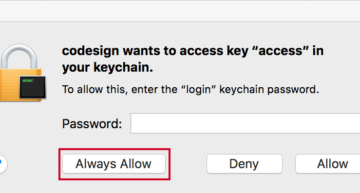SEO Pros and Cons of Changing Web Architecture.
Quick Summary of Contents
Every so often, I either receive an email, or phone call, or have a conversation with a potential customer or customer about the pitfalls of moving web pages from sub-directories to the top directory of the website.
 Unbeknownst to some, your web architecture is a vital part of your search engine optimization (SEO) effort and content, in addition to creating unique, value-add content that focuses on customers first and search engines second.
Unbeknownst to some, your web architecture is a vital part of your search engine optimization (SEO) effort and content, in addition to creating unique, value-add content that focuses on customers first and search engines second.
When designing or redesigning your website, it is imperative to understand how web architecture, including URL structure, can positively and negatively impact your website’s potential to rank in search engines highly.
Today’s post will try to shed light on SEO advantages and disadvantages of not planning your web architecture to be SEO-friendly or changing your web architecture without considering the SEO impact.
Pros of Changing To Organized Web Architecture.
Of course, there is a wide-ranging list of SEO pros when changing from a cluttered and hard-to-navigate website to an organized web architecture that is SEO-friendly and search-engine safe in all aspects.
I’m not going to discuss or exhaust every possible pro of changing to an organized, search-friendly web architecture, but I’ll attempt to shed light on the most common pros for making such SEO architecture changes.
First and foremost, continuing to focus on content as the goal of ranking in search engines, doing yourself a favor, and saving money in long-term SEO planning and keeping your website architecture organized from the beginning.
Keeps web architecture short and effective.
Quite often, I have clients with extremely long URLs due to their naming convention of directories and files.
I quite often see very complicated, multi-nested directories with directory and file names beyond 15 or more characters. The rule of thumb is to keep your URL character count, including domain name, under 75 characters when possible.
For example, say you have the following URL: http://www.exampledomain.com/business-process-management/systems/pros-cons-business-process-management-systems.
Truth be told, this is a bit long, yet your content could still rank well in search engines. Most website owners will continue to create subdirectory after subdirectory for each keyword they want to be included in the URL, leading to keyword-stuffing directories.
It’s best not to stuff your URLs with keywords, as this type of behavior can be considered gaming search engines. A better and more effective URL may be to abbreviate URLs when possible to remain search-engine safe.
In the end, your content could very well rank, if not outrank the previous URL, in search engines using a modified version of the previous URL: http://www.exampledomain.com/bpm/pros-cons-bpm-systems.
The best advice is to focus your efforts on keeping a concise and uniform naming convention while focusing on providing useful and value-added content for customers.
Keeps web architecture unique and SEO-friendly.
There are a good number of potential SEO efforts and projects I review with potential customers.
I often find that there is no rhyme or reason for their URL structure. This greatly impacts their SEO rankings and efforts if they are knowingly attempting to rank their website in search engines.
Search engines expect unique URLs just the same as search engines expect unique content. Websites that use non-search-friendly URLs are negatively impacted when it comes to ranking in search engines.
When websites use special characters in their URLs, search engines are unable to differentiate pages and thus could spawn duplicate content penalties.
An example of a non-friendly URL is the typical out-of-the-box URL provided by a content management system such as WordPress: http://www.exampledomain.com/index.php?p=520. Even though the content may be unique, search engines are incapable of interpreting special characters as a part of the URL.
In addition, I find most websites are not using proper robot and sitemap files for their website, and some are not using either at all. This, too, can place your website at an SEO disadvantage when not used at all or used incorrectly.
Creates useful customer and search engine experience.
One of the first things I ask potential customers and customers is to provide me with their web architecture documentation.
Most either provide me with their website login credentials to see file structure or stare at me like a deer in headlights.
Either way, I ask to be provided with their web architecture documentation as this exhibits how organized and well-informed customers are about the websites.
Typically, websites with no documentation are the most horrendous to perform SEO on, as nothing about them is uniform or consistent.
One of the main factors search engines rank websites for is their useful customer experience. Gone are the days of websites having excessive ads and keyword-laden linking strategies, links, and content that made for a horrific user experience, to say the least.
Improve your website search ranking by providing a useful customer experience emphasizing engaging content to educate and inform customers about how to solve their problems.
Organize your content into digestible and easily read-chunks of information to consume. Optimize using keywords, internal and external links, header tags, images, and image alt tags.
Reduces content clutter and creates a themed website.
 An organized web architecture can provide a clutter-free website that is easy to use. Think of an organized web architecture much like having different organization and department levels in an organizational chart.
An organized web architecture can provide a clutter-free website that is easy to use. Think of an organized web architecture much like having different organization and department levels in an organizational chart.
Strive to create buckets or groups of themed content when organizing your website’s architecture. Theming and organizing content not only helps users of your website but also helps search engines when crawling and indexing your website.
A website with unrelated and unorganized content does not rank well in search engines as a subject matter expert or an authoritative source.
Organize your content into appropriate categories and multi-nested subcategories where needed. This will help plan and focus your content and allow for greater flexibility should you expand to include additional topics and subjects in the future.
Cons of Changing Web Architecture.
Before being blinded by overwhelming pros and blindly implementing web architecture changes with the expectation of increasing search rankings and website traffic, THOROUGHLY comprehend and understand all that can go wrong with the incorrect implementation.
I’ve seen and had customers experience severe loss in search rankings and traffic due to not understanding the cons of changing their web architecture to be search-friendly.
Again, we will not discuss or exhaust each con but will try to highlight and discuss those that are common. So get ready to take notes, and let’s jump into the cons of changing your web architecture to increase the SEO effectiveness of an entire website.
Creating duplicate content penalties.
Whether a new website design or re-design, one of the biggest cons I’ve experienced with potential customers is that changing web architecture can lead to duplicate content issues and penalties.
Changing URLs from non-search-friendly to search-friendly, entire websites from https or http and vice versa, or changing domain names altogether, incorrectly performing these actions can lead to a multitude of 301 or canonical issues and 404s.
For most, changing web architecture leads to duplicate content issues because of not correctly using 301 or canonical redirects.
Also, I’ve known customers to start a new website on a new domain, but they make the costly mistake of using the same content. This negatively impacts the search rankings of both old and new websites.
Remember to carefully plan your new website or website re-design and perform SEO audits from time to time, or risk long-term search rankings and the future of your website.
Negatively impacting internal and external links.
Another area most people tend to forget about when changing web architecture is impacting both internal and external links.
When changing links that have been used to link to your website or indexed by search engines, you’ll want to use 301 redirects. Using 301 redirects will help update and direct search engines.
Changing a link without identifying and using a 301 redirect spawns a 404 error for both the website and is link.
In addition, internal linking for websites can lose their rankings with broken links due to web architecture changes.
Before changing links for any reason, consider how wide-ranging the changes can be and the consequences of your changes in all aspects. You will want to use free SEO tools like Screaming Frog to identify internal and external linking issues and errors.
Damaging and losing current SEO rankings.
Changing web architecture can often bring long-term SEO results while inflicting only short-term damage or pain.
However, some changes, when not implemented correctly, leave you with a shell of a website and severely damaged rankings.
It’s best to understand the impact of the SEO changes, both short and long-term SEO results. If you are unsure about changes or have doubts, please don’t make the change.
Another area that suffers from damage and lost search rankings is not correctly linking pages throughout a website. Many times, individuals link their deepest web page (bottom) back to the homepage (top) instead of the other way around, top to bottom.
Always link internal website pages from top to bottom, as linking from bottom to top can greatly harm the search rankings of individual pages.
Another area to suffer great loss in search rankings is renaming pages without 301 redirecting to the new page. When you rename a page without making a 301 redirection from the old to the new page, your renamed or new page losses the previous SEO authority from the old page.
Conclusion of SEO Pros and Cons of Changing Web Architecture.
In closing, there are many things to consider about web architecture to increase or sustain your website’s current search rankings.
 Creating and changing web architecture without severely impacting search rankings can be challenging at times when one doesn’t go into such a project with their eyes wide open.
Creating and changing web architecture without severely impacting search rankings can be challenging at times when one doesn’t go into such a project with their eyes wide open.
You can have the best and the most optimized URLs, page names, keywords and etc., known to man, yet a website and content both lack organization, intuitiveness, uniqueness, and true value.
Therefore, to gain and sustain search rankings, no matter what, your focal point should be consistently creating value-add content.
Yes, organize your content and ensure sound optimization techniques and tactics, but your content must also be unique, value-added, and written to solve customer problems.
Writing for search engines first and only is a recipe for disaster. Focus on the customers and less on search engines, and this will be the first step to a web architecture that is both search-engine safe and friendly.
Keep your web architecture shallow when possible, and be sure to thoroughly plan and document the structure of your web architecture in all facets.
Consider all the moving pieces of an optimized and search-friendly web architecture, such as internal and external linking, off-page and on-page optimizations, and search-engine safe keyword strategy for directories and URLs, to just name a few.
Increasing and sustaining your SEO effectiveness, and executing a sound, optimized website architecture, is not at all impossible. Just as many have been unsuccessful, there are many who have had success.















